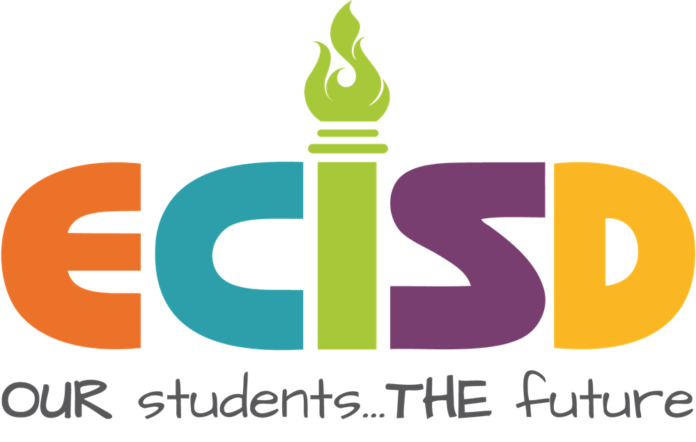Having found that most placements in Ector County ISD’s Disciplinary Alternative Education Program were African American students, the district is digging into the data to determine the reason.
Superintendent Scott Muri said Black students are 4 percent of ECISD’s student population. Last year, a report to the school board showed that 50 percent of Black students made up half the disciplinary placements.
ECISD is about 77 percent Hispanic.

“And, so you start to peel back the layers of the onion and you realize that in that case some of our African American students do commit the same offense as other students of other races, but their consequence is more harsh. It’s the same offense, but harsher consequences. And why is that? … If I’m a Black student and … a white student or a Hispanic student skips class, why does the consequence differ? It shouldn’t differ, but that’s what we were seeing is that our African American students, their consequences for the same offenses were more harsh and that’s wrong; that’s wrong,” Muri said.
He added that something is wrong with the system when that happens. When you see a data point like that, Muri said, you want to unpack it to fully understand why these things are happening.
“… That’s our responsibility, to make sure our kids are safe and this allows us to do that,” Muri said.
In a prior district Muri worked in, they noticed that their English as a second language students were underrepresented in the dyslexic program. So they wondered if that meant if you were an ESL student you couldn’t be dyslexic. But that wasn’t the problem.
“The problem was our educators, our ESL teachers, did not know how to identify ESL students as dyslexic. We had not trained them in that skill set. … Once we provided the training for teachers, then the number of our ESL students that were labeled dyslexic kind of mirrored what our non-ESL students were. But we would never have known that had we not looked at data. And so that’s what this is,” Muri said.
The district hired Hanover Research, headquartered in Arlington, Va., to conduct an equity audit to make sure the needs of children and families are being met.
The survey is costing $65,000. “… We’re looking all across our system. The survey was just one piece of the work that we’re doing. They’ll analyze the survey results and then they’re looking at … a large variety of data within ECISD — academic data, discipline data, special ed data, ESL data, just a variety of different data elements that they’ll pull to … help us tell the story of what’s happening,” Muri said.
“What do these data say? Are we missing things with kids? Are there subgroups of students that are not receiving the kind of support or services that they need? Do we have some groups that are underperforming, or performing differently, because of something. They will kind of shine a light on things that we need to see as a district much like a year and a half ago when we saw the discipline data, we shined a light on that,” Muri said.
“They will help us see if there are other anomalies in our organization that need attention …,” he added.
Equity audits, he said, are happening all over the country and have been for decades. “… In fact, we in public education we’ve been fighting for equity for our students for many, many, many years. We see our kids of poverty, you know, we know that it costs more money to educate a child of poverty. And sometimes our kids of poverty don’t have an equal opportunity to be successful. And so we pay attention to that. Sometimes our fragile children are at risk. Children don’t have the type of opportunities they need to be successful. And so an equity audit is one way to tell if you have subgroups of children, or subpopulations, that just don’t have the opportunities that they need and deserve to be successful,” he said. Muri acknowledged that some students who can’t sit still or have other behavior issues get put into special education. “It happens. And we see all kinds of situations and have, historically in education. What we have to realize, if that’s happening, there are things that we need to do organizationally to respond to that. Special education is a wonderful program for kids that have very specific conditions. It’s not a place for every child; it’s not a place for discipline problems. … It’s a place for children that have learning difficulties, learning challenges, and we have teachers and specific supports that can help those kids be just as successful, if not more so, than children that do not have these challenges,” he said.
Muri said the district will wait for the audit findings and form a response “to whatever those situations may happen to be.”
He said sometimes this means that a specific area potentially needs more funding, such as special education or students of poverty.
“Sometimes it is more professional development, a specific type of training on the part of teachers or administrators, counselors, etc. Sometimes you make staffing adjustments. We might need to have different types of supports for kids, or different types of supports for staff members. But the remedy really depends upon what the data … challenge is that we’re facing as an organization,” Muri said.
Unconscious bias training started last year for all 4,200 ECISD employees and is ongoing. Senior leadership training was coming up the week of May 24.
Another example of equity was last March when ECISD shifted to remote learning.
“There was an enormous equity challenge that we faced and that was kids that did not have internet access in their home and kids that did not have devices … In the months of March and April, we were printing thousands of packets and the only reason we had to do that is because our kids and families did not have those tools. Our opportunity as a school district was to immediately address that concern,” Muri said.
The situation also showed that teachers rely on students to have internet access in their homes.
“… They might give an assignment that requires children to do research …, requires kids to develop some kind of presentation. But we expect kids to have internet access in their home and have a device. And it became very evident that that is just not the reality. And at that point, it was 39% of our kids that didn’t have it. Today that is very different. We’ve addressed many of the equity issues that the pandemic created in the lives of our children and families.”
“… That’s another way to think about equity, especially with our families of poverty. If they don’t have the resources that they need, school is different for them. They’re at an unfair disadvantage and we as a district must be responsible for ensuring that every kid, no matter who they are, that they have an equal shot of success in life,” Muri said. “The pandemic, again, just … highlighted the fact that there are significant inequities that exist in our own community and we have a responsibility to ensure that they do not have an effect upon our children and their learning.” Although he said he couldn’t give specifics, Muri said every family in ECISD that wants it has high-speed internet access in their home.
“We’re providing that from SpaceX to our local cable provider, so if you live in the city limits every family has access today and then every child has their own wireless device, either an iPad or a Chromebook.”




